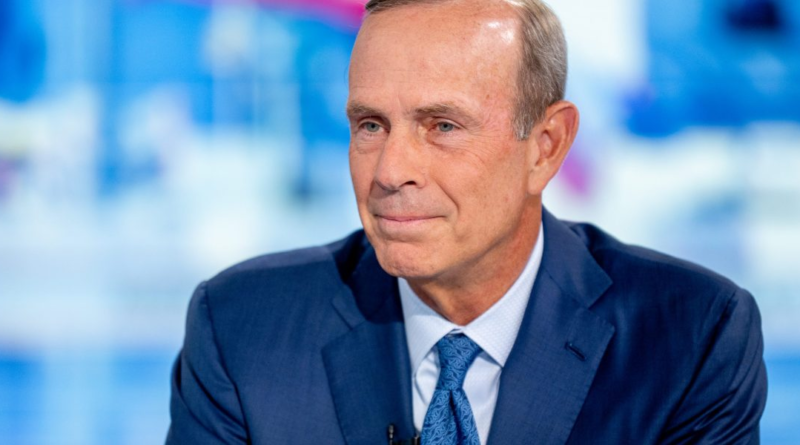Chevron CEO says we're headed for oil at $100—but is confident consumers can handle it
Mike Wirth has bad news for consumers. Those eye-watering prices you’re seeing at gas stations? They likely will go even higher.
The Chevron CEO believes the current $95 price tag against a barrel of crude oil is set to hit $100—and rise beyond it.
“It sure looks like [$100 a barrel is going to happen],” Wirth told Bloomberg TV. “We’re certainly motoring in that direction. Supply is tightening, inventories are drawing, these things happen gradually—you can see it building.”
However, while Wirth said consumers are already “close” to seeing fuel prices hit the $100 a barrel threshold, and trends suggest prices will only continue to rise, he—and other economic experts—believe consumers will be able to handle the pressure.
Why are gas prices so high?
Oil prices—and as a result gasoline and diesel prices—are rising as a result of political tensions and geopolitical factors.
In April some members of the Organization of the Petroleum Exporting Countries (OPEC)—including the United Arab Emirates, Kuwait, Oman, Algeria and Kazakhstan—announced they were going to begin curbing production, slashing approximately 1.15m barrels a day in a bid to stabilize the market.
Meanwhile Russia—another oil-rich nation, though not a part of OPEC—has said it will not sell its product either directly or indirectly to the U.S., after the latter placed price caps on the commodity following Russia’s invasion of Ukraine. The retaliation will do little further harm to prices, as President Biden has already banned Russian oil imports into the U.S. which sent prices spiraling.
On top of that deadly flooding in Libya—another OPEC nation—this month could disrupt the country’s oil supply further, with OPEC claiming the nation usually produces around one million barrels a day.
Is gas going to stay this expensive?
Experts predict some price easing in the future.
Wirth said that the current highs are a sign the market is not mid-cycle, adding the trends haven’t pushed Chevron—the second largest oil company in the U.S.—to change its long-term price expectations for oil.
“We really don’t change [our long term price] very often,” Wirth explained. “We’ve been in a volatile market really going back to the pandemic when things came down, the recovery when it was high, the war. This has been a period of time where prices have been unpredictable and volatile.”
The U.S. Energy Information Administration has even better news: although it sees average prices increasing in Q4 2023, this is set to come back down by Q2 2024.
It explained Brent crude oil is likely to average $93 per barrel in the final months of this year—with a decline in global oil inventories supporting this hypothesis—before easing to $87 a barrel by mid-2024 as oil inventories rise once again.
Will oil prices impact the economy?
The Fed has painstakingly rolled out measures to bring down the level of inflation—despite an onslaught of warnings—which have left even critics pleasantly surprised.
And spectators could justifiably be nervous that this work could be undermined by gas prices alone—after all more than half the rise in the August Consumer Price Index was down to petroleum.
But Wirth has faith in the U.S. consumer, saying $100 a barrel is higher than “we tend to see in the long term.”
“I think it will have some effect on the economy but we’ve had relatively higher oil prices now for most of this year and certainly all of last year,” he said. “The recession that everyone’s been talking about hasn’t arrived and so I think the underlying drivers of the economy in the U.S.—and frankly globally—remain pretty healthy.
“I think it’s a drag on the economy but one that thus far the economy’s been able to tolerate.”
Where can I find the cheapest gas in the U.S.?
Among the most expensive states to buy gas are on the West Coast, according to public service site AAA.
California has the most expensive gas with regular petroleum costing an average of $5.793 a gallon. Mid grade comes in at $5.992 a gallon and premium fuel comes at $6.148 a gallon.
Following California is Nevada at $5.057 a gallon, Washington at $5.043, Hawaii at $4.836 and Oregon at $4.688.
Conversely drivers on the East Coast—and in the South—enjoy the lowest gas prices. Mississippi ($3.296 per gallon) has the lowest price in the country while Georgia ($3.356 per gallon), Louisiana ($3.395 per gallon), South Carolina ($3.411 per gallon) and Alabama ($3.418 per gallon) round out the bottom five.
The price discrepancy comes down to a range of factors, including proximity to refineries, ports, pipeline and blending terminals—and taxes.
California tends to have the highest and most volatile prices because the state has high fuel taxes as well as a stringent gasoline program that is stricter than the federal government’s—and fewer refineries produce the product.



